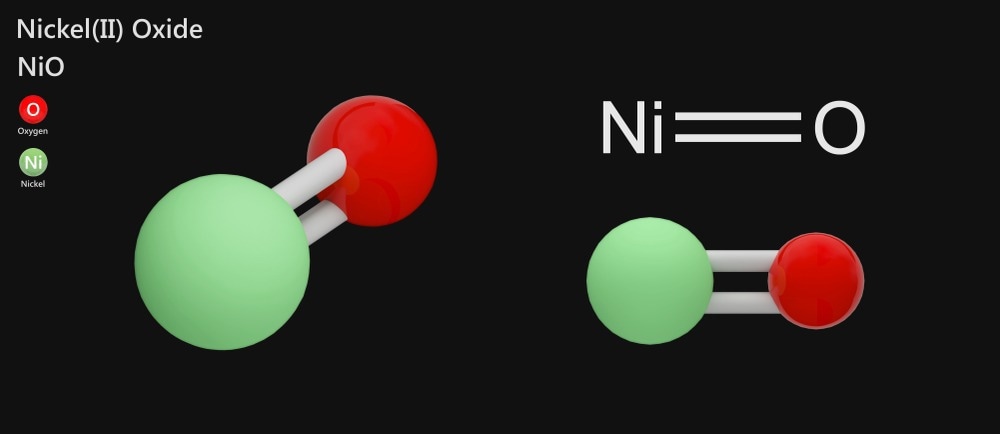Updated by Reginald Davey 11/07/23
Nickel has been used for thousands of years, with one of the earliest known uses of the element being in Syrian bronzes. It was not until the 17th century that Nickel was finally isolated from its raw minerals. Nickel is the 22nd most abundant element on earth.

Image Credit: Orange Deer studio/Shutterstock.com
Nickel oxide, which is formed from the thermal decomposition of NiCO3, Ni(OH)2, or NiNO3, is a green-colored powder, and is the principal oxide of nickel. Upon heating, it becomes yellow. It is insoluble in hot or cold water, but readily soluble in acids and adopts the same crystalline structure as NaCl. It is often non-stoichiometric.
The mineral form of nickel oxide is known as bunsenite and is extremely rare. Annually, millions of kilograms of nickel oxide are produced.
Nickel Oxide Formula
NiO
Electronic Structure
The electronic structure of nickel oxide is neither completely ionic nor electron-free. Rather, it is a mixture of both structures. This structure makes NiO suitable for demonstrating the shortcomings of the density functional theory and the Hartree-Fock theory. Nickel oxide is a wide band gap Mott insulator.
Key Properties
| Property |
Value |
| Density (g/cm3) |
6.67 |
| Melting Point (°C) |
1984 |
Applications
Nickel oxide has a range of applications such as:
- Making electrical ceramics such as thermistors and varistors, for example ferrites (nickel zinc ferrite)
- Pigments for ceramic, glasses and glazes
- Nickel oxide can be reacted with acids to form salts and other compounds, for example nickel sulfamate for electroplating and nickel molybdate for hydrodesulfurization catalysts
- Gold doped nickel oxide films can be used as transparent electrodes in optoelectronic devices Preparation of nickel cermet for solid oxide fuel cell anode layers.
- Lightweight structural components for the aerospace industry
- As a material for temperature and gas sensors
- Nanowires and nanoalloys
- Due to its attractive semiconductor properties, nickel oxide has been widely explored for its use in various battery, electrochemical, photocatalytic, and chemical sensing applications.
NiO Health Risks
Severe health complications can occur by repeated inhalation of nickel oxide, including lung damage, lesions, and cancer. In the lungs, NiO has a long retention half-time, persisting for more than three months in rat models, and it is classed as a human carcinogen.
In Summary
Nickel oxide is the principal oxide of nickel and is used in a number of key industrial applications, with several novel uses of nickel oxide developed over the past few years. However, as it is classed as a human carcinogen and can cause a number of health problems if inhaled, care must be taken in its preparation and handling.
More from AZoM: Nickel Oxide Superconductor For A Faster More Efficient Flow Through Electronic Devices